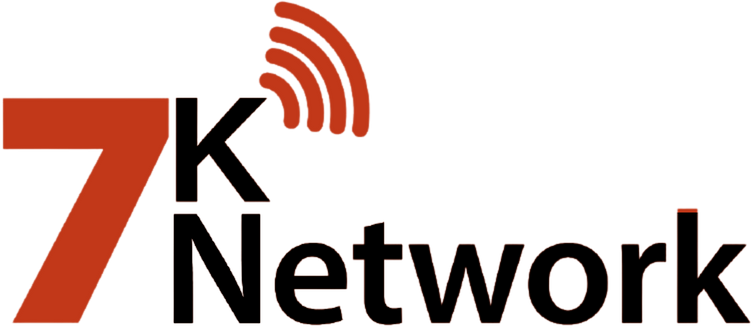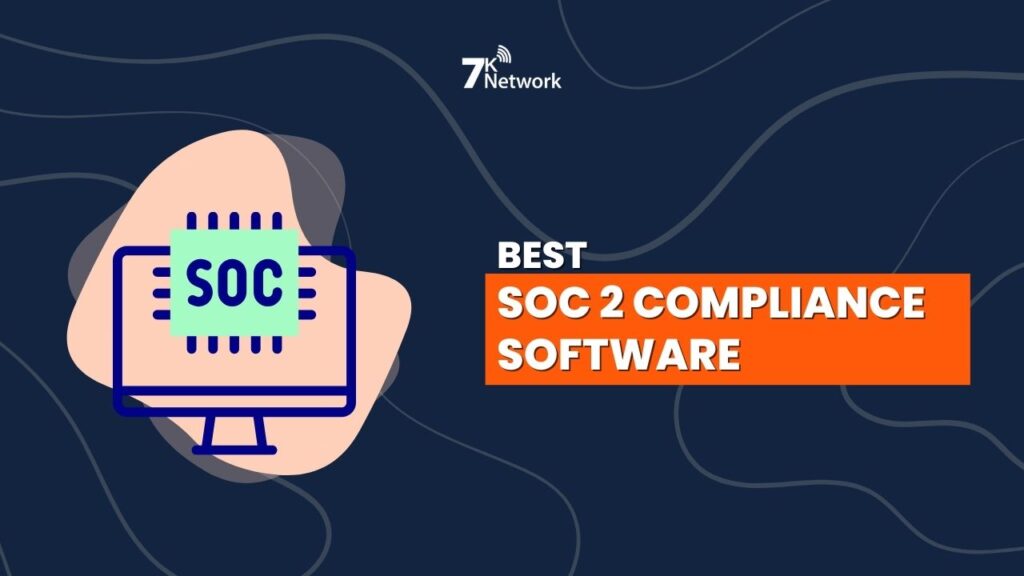In today’s digital landscape, protecting customer data is not just a best practice; it’s a necessity. SOC 2 compliance has become a benchmark for security, availability, processing integrity, confidentiality, and privacy. To help businesses meet these rigorous standards, we’ve curated a list of the top 15 SOC 2 compliance software tools.
These are tools that are crucial to startups, SaaS businesses, companies, developers, DevOps teams, IT administrators, security professionals, and compliance officers, whose responsibility is to develop and maintain secure systems. Each of these tools was tested across the most critical factors: automation features, audit readiness, integration ease, scalability, user experience, and third-party ratings. Apart from whether or not you have to automate your audits or live with continuous compliance, these offerings give tailored answers in terms of team sizes and compliance maturity stages.
Criteria for Selecting the Best SOC 2 Compliance Software
1. Automation Capabilities: Automation of monitoring, evidence collection, and reporting significantly minimizes human error and manual labor.
2. Audit Readiness: The tools are favoured that make auditing an easy task, allow real-time status checking, and consist of auditor-approved templates or frameworks.
3. Ease of Integration: SOC 2 compliance software must easily integrate with leading cloud providers (e.g., AWS, GCP, Azure), HRIS, and DevOps platforms (e.g., GitHub, Jira, Okta) to continuously monitor controls.
4. User Experience: Clean, uncluttered dashboards and workflows software guided by simplifying complexity for non-technical users to ease compliance.
5. Scalability: The solution should grow with your company, whether a startup expanding or mature organizations with many teams and systems.
6. Documentation & Support: We looked for whether support from experts is available or not, auditor partnerships, and full documentation for easy implementation and troubleshooting.
7. Customer Reputation & Reviews: Only those platforms with great customer reviews and a good reputation for providing value to actual users were selected.
8. Pricing Transparency & Flexibility: Transparently priced plans, such as startup-friendly ones, were a plus, particularly for businesses that are at different stages of their compliance journey.
List of 15 Soc2 Compliance Software
Following are the top 15 SoC 2 compliance software with their features, pros and cons, pricing, and who are the ideal users to make use of these:
1. Sprinto
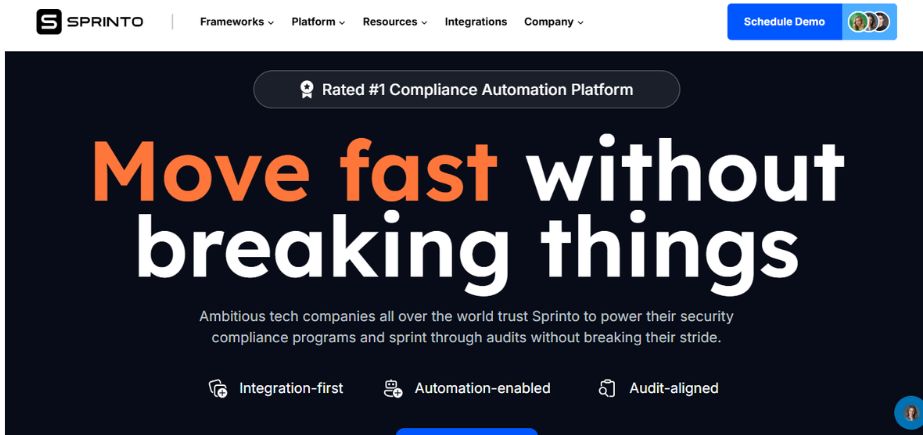
Sprinto is a SOC 2 compliance software built specifically for high-growth SaaS and cloud businesses. It runs continuously, monitoring your tech stack with control checks, evidence collection, and policy enforcement automatically performed. Sprinto’s ease of use and live dashboards drive compliance posture without the hassle. With support for multiple standards and auditor partnerships, Sprinto streamlines audit readiness and reduces labor. Sprinto integrates well within agile development environments and enables teams to be easily compliant.
Key Features:
- Real-time control tracking
- Employee training and onboarding
- Audit workspace
- Risk and asset management
Pros:
- Fast implementation
- Great support
Cons:
- Limited analytics
- Still growing integrations
Pricing:
Contact for pricing
Who Should Use It?
Fast-growing startups seeking SOC 2 and ISO automation.
2. Vanta
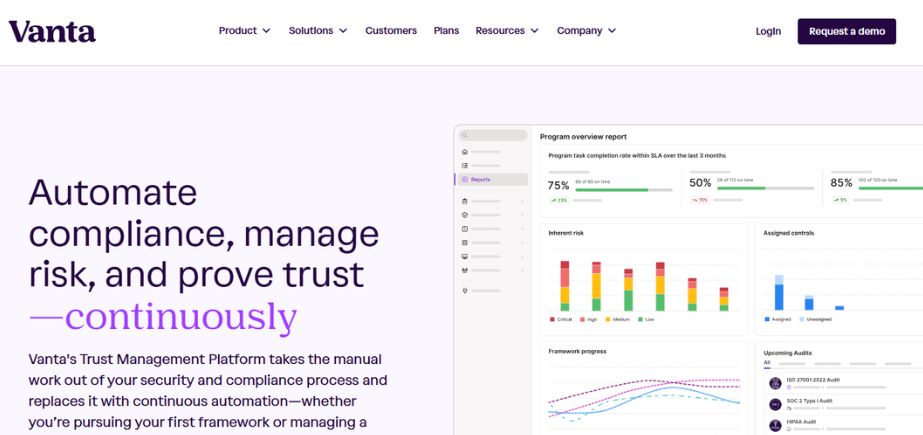
Vanta manages SOC 2 compliance by automating security monitoring and evidence gathering. It scans your systems continuously to confirm controls are implemented and notifies you of possible threats. With cloud service, HR platform, and ticketing system integrations, Vanta reduces manual labor and speeds up audit readiness. The platform provides real-time dashboards and guided workflows, making it perfect for startups and scaling businesses looking to set up and maintain compliance with minimal inconvenience.
Key Features:
- Continuous control monitoring
- Automated evidence collection
- Integrations with cloud services
- HR management tools
- Security questionnaire automation
Pros:
- Rapid onboarding
- Reduces manual audit tasks
Cons:
- Expensive for smaller teams
- Limited customization in reporting
Pricing:
custom pricing
Who Should Use It?
Startups and mid-sized SaaS companies need fast SOC 2 readiness.
3. Drata
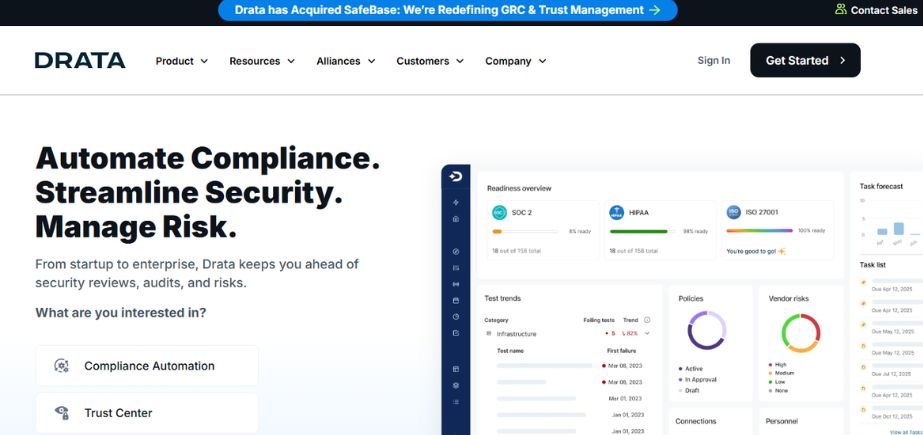
Drata is a real-time SOC 2 compliance software that uses automated collection of evidence, control monitoring, and audit readiness. It combines with cloud providers, HR platforms, and dev tools to enable continuous monitoring of compliance status. Drata dashboards provide total visibility into control performance and audit readiness. The platform also includes risk management and policy enforcement workflows, and hence is a strong solution for tech companies that wish to scale securely with compliance across multiple frameworks.
Key Features:
- Real-time compliance dashboard
- Over 75 integrations
- Evidence collection automation
- Continuous employee monitoring
Pros:
- Intuitive UI
- Scales well with growing teams
Cons:
- Slight learning curve for setup
- Pricey for smaller organizations
Pricing:
Contact for pricing
Who Should Use It?
Tech companies seeking scalable, automated compliance.
4. Secureframe
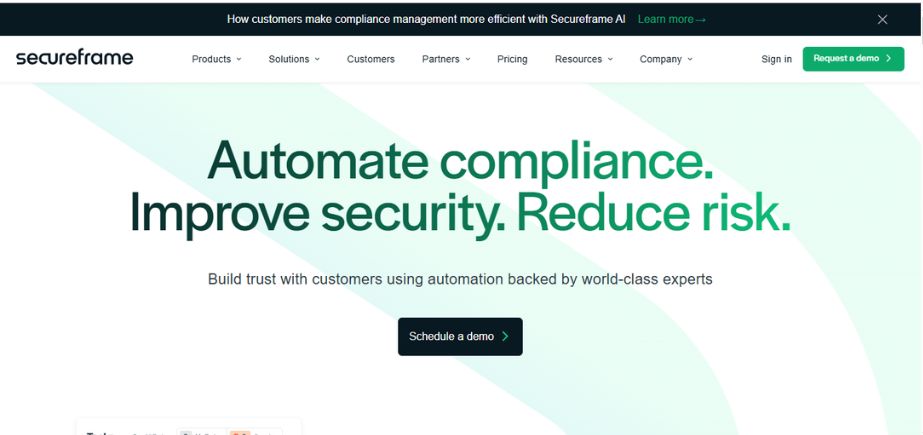
Secureframe provides a full-featured compliance automation platform, making it easy for organizations to attain and sustain SOC 2 readiness. It automates everything from policy writing and employee training to continuous monitoring and evidence gathering. Secureframe has more than 100 integrations, facilitating quick onboarding and real-time visibility into your compliance posture. The application reduces audit prep time greatly, and its user-friendly dashboard walks users through the complete lifecycle of security and privacy compliance.
Key Features:
- Framework-specific workflows
- Real-time vendor risk management
- Policy library and automation
- Cloud integration support
Pros:
- Fast audit prep
- Strong documentation tools
Cons:
- Limited advanced customization
- Higher upfront cost
Pricing:
Contact for pricing
Who Should Use It?
Companies are aiming for multi-standard compliance quickly.
Suggested Blogs:
- Best ORM Tools
- Best Jira tracking Software
- Best Free Augmented Reality Software
- Best Infrastructure Monitoring Tools
- Best Healthcare CRM for Patient Management
5. Tugboat Logic
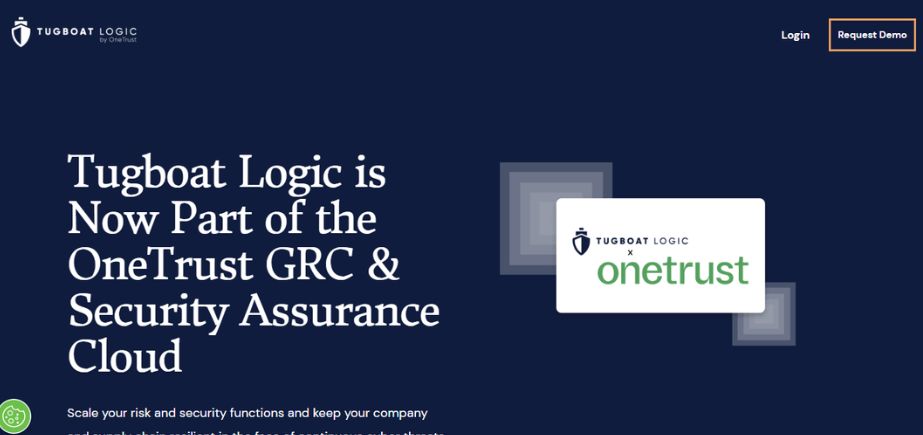
Tugboat Logic is a guided, step-by-step approach to SOC 2 compliance that deconstructs the daunting process into something achievable and manageable. Its platform includes automated control mapping, evidence gathering, and audit-ready reports. Tugboat includes built-in policy templates and risk assessments to make it easy to implement. For startups and small and medium-sized enterprises, Tugboat Logic is perfect for companies that do not have compliance experts on hand. Tugboat fills the gap between security intent and auditor expectation, minimizing the fear of audits as well as simplifying the process.
Key Features:
- Guided audit readiness workflows
- Pre-built policies and controls
- Auditor integration
- Continuous compliance monitoring
Pros:
- Affordable
- Easy for first-time users
Cons:
- Fewer integrations than competitors
- Less flexibility for complex orgs
Pricing:
Custom pricing
Who Should Use It?
Startups or SMBs new to SOC 2 compliance.
6. Strike Graph
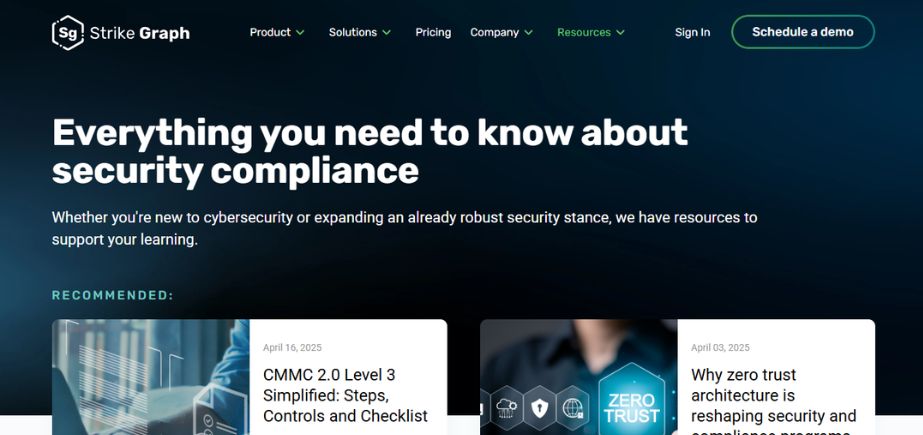
Strike Graph provides scalability and automation to take advantage of SOC 2 compliance for your organizational purposes. You can use the platform to build a custom set of controls, collect evidence, and track audit readiness milestones. It is ideally suited for organizations that require scalable, multi-standard functionality. Strike Graph provides cross-functional teams with an environment in which they can collaborate on security goals, complete with a dashboard that closes gaps and compliance status. It’s a smart choice for visionary, growth-oriented businesses.
Key Features:
- Custom control mapping
- Multi-framework support (SOC 2, ISO, HIPAA)
- Evidence repository
- Risk assessment tools
Pros:
- Highly customizable
- Easy auditor collaboration
Cons:
- Smaller integration list
- UI can feel complex
Pricing:
Custom pricing
Who Should Use It?
Mid-market companies need tailored compliance workflows.
7. Laika (Now, Thoropass)
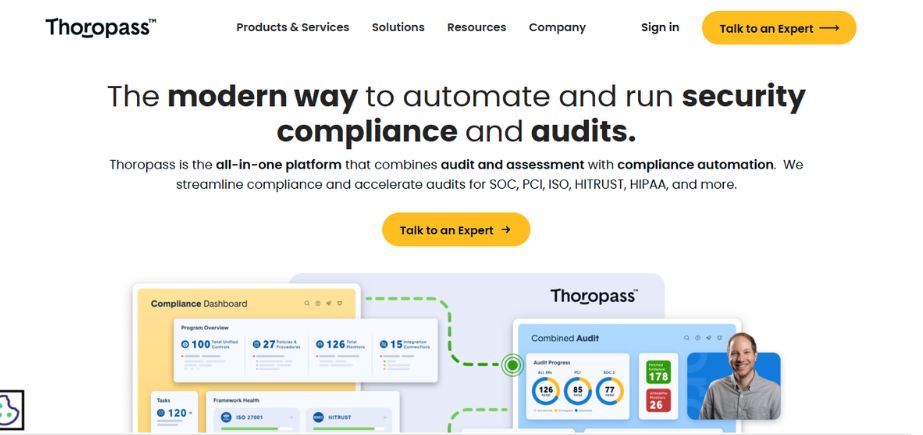
Laika combines automation with experienced compliance advice to enable companies to achieve SOC 2 and other compliance frameworks. Laika provides control mapping, live monitoring, and collaborative audit management. In contrast to fully automated solutions, Laika assigns every client a team of compliance specialists for tailored support. Laika integrates seamlessly with leading cloud platforms and business tools, automating most of the evidence-gathering and reporting. Laika is best suited for expanding businesses that require automation as well as human monitoring in their compliance process.
Key Features:
- Compliance advisory services
- Evidence automation
- Risk analysis dashboard
- Multi-framework support
Pros:
- Hands-on help from experts
- Customizable controls
Cons:
- Costlier than DIY tools
- Manual steps still needed in places
Pricing:
Custom pricing
Who Should Use It?
Startups needing both tech and human compliance guidance.
8. TrustCloud
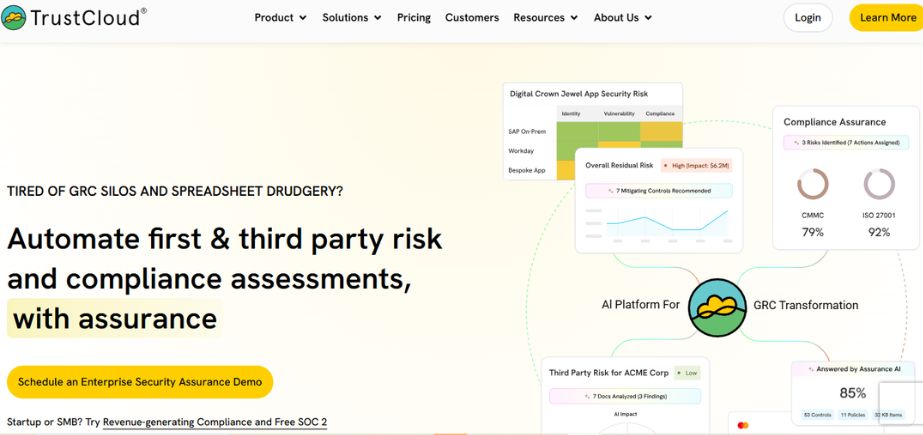
TrustCloud enables companies to simplify and scale their SOC 2 compliance. TrustCloud maps controls, collects evidence, and manages workflows automatically, with simple-to-use tools to identify risk and manage it. TrustCloud provides transparency through trust scoring and readiness indicators, and simple tracking of status. It provides interdepartmental cooperation and provides the freedom to integrate into a huge number of frameworks beyond SOC 2. TrustCloud is particularly useful for startups that must establish customer trust with audited security practices.
Key Features:
- Risk register and scoring
- Continuous control monitoring
- AI-based task recommendations
- Collaboration tools
Pros:
- Transparent control tracking
- Strong policy generation features
Cons:
- Newer on the market
- Limited reporting formats
Pricing:
0-50 Employees, $1,999/year (1 Framework)
Who Should Use It?
Startups and scaleups focused on risk transparency.
9. LogicGate
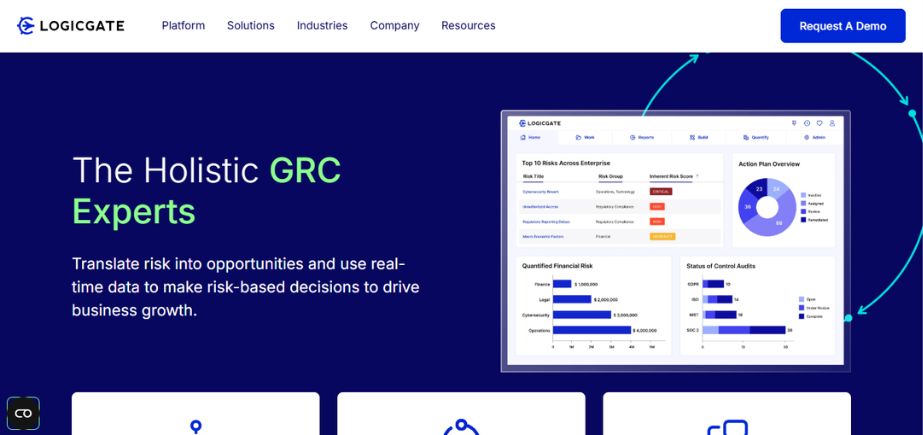
LogicGate is an enterprise risk, governance, and compliance platform that facilitates SOC 2 readiness by using configurable workflows and extensive risk management features. LogicGate enables organizations to map controls, evaluate risk, monitor remediation, and manage compliance activities in one centralized, unified environment. Because it’s module-based and has a drag-and-drop interface, LogicGate can support custom business processes since it’s flexible. It’s a good fit for organizations seeking an efficient, adaptable compliance system that scales with complexity and aligns with overall enterprise risk initiatives.
Key Features:
- Risk and control libraries
- Workflow automation
- Vendor risk management
- Custom dashboards
Pros:
- Highly flexible
- Enterprise-grade features
Cons:
- Setup complexity
- Higher learning curve
Pricing:
Custom
Who Should Use It?
Enterprises needing tailored compliance and GRC tools.
10. Aptible Comply
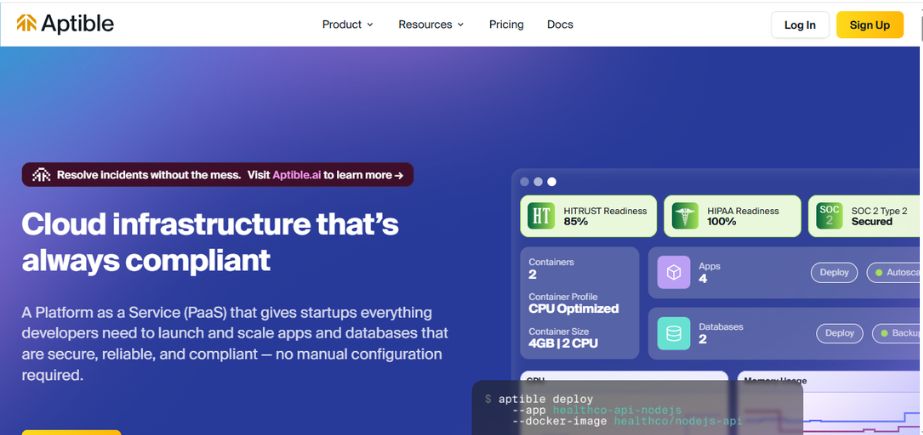
Aptible Comply is an SOC 2 compliance software designed for startups and software companies focused on healthcare. Aptible Comply streamlines SOC 2 and HIPAA compliance through automated control checks, ongoing monitoring, and logging of evidence. Aptible’s concise dashboards and template-based evidence organization save time and effort in auditing. Aptible Comply prioritizes secure deployment environments and ties into DevOps workflows, which makes it well-suited for teams creating secure infrastructure and who must maintain the trust of enterprise clients and regulators.
Key Features:
- Pre-built security policies
- Automated evidence collection
- HIPAA & SOC 2 controls
- Continuous monitoring
Pros:
- Healthcare-specific templates
- Strong cloud security posture
Cons:
- Narrow focus
- Fewer enterprise features
Pricing:
Starts at $499/month
Who Should Use It?
Healthcare, fintech, and early-stage startups in regulated sectors.
11. Hyperproof
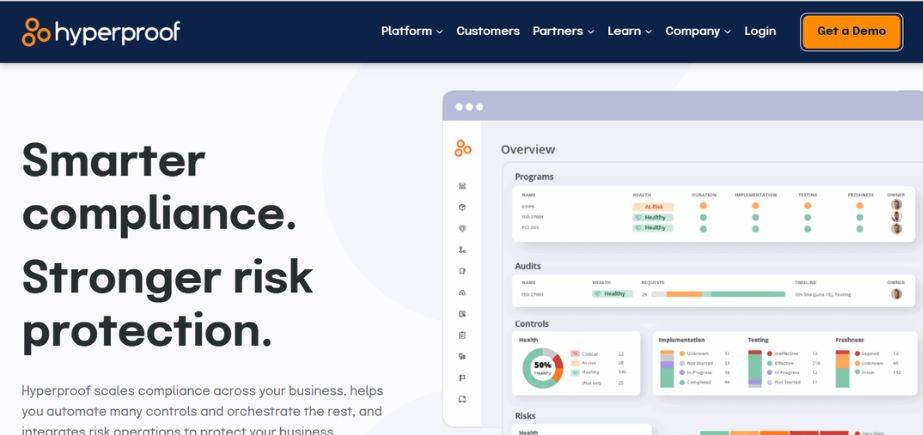
Hyperproof is a risk and compliance management platform that assists organizations in streamlining their SOC 2 processes in addition to other frameworks such as ISO 27001 and GDPR. The platform consolidates all compliance processes, ranging from control tracking and evidence gathering to task management and audits. It has automated reminders, cloud system integration, and real-time reporting. Hyperproof is ideal for organizations with multiple compliance programs that require a single, scalable solution to eliminate redundancies and remain constantly audit-ready.
Key Features:
- Framework mapping
- Continuous control testing
- Integration-rich workflows
- Centralized evidence management
Pros:
- Strong cross-framework support
- Great for maturing compliance teams
Cons:
- Advanced plans can be costly
- Onboarding may take time
Pricing:
Custom pricing
Who Should Use It?
Growing companies with multi-framework needs.
12. AuditBoard
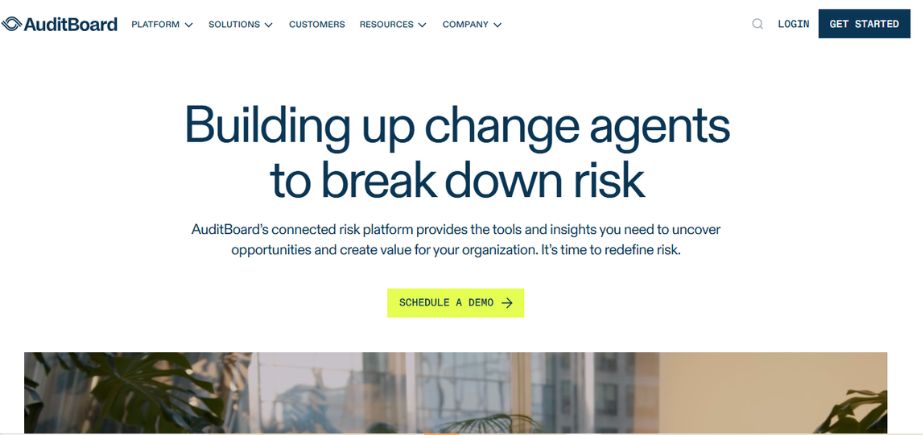
AuditBoard is an enterprise-level compliance and audit management platform that simplifies SOC 2 readiness. It consists of risk assessment tools, control management, automated workflows, and document collection. It is developed for internal auditors and risk professionals with real-time collaboration, detailed dashboards, and integration with business systems. Its structured approach is ideally suited to mid-sized and large organizations with the need for a strong governance platform that supports not just SOC 2 but scales across numerous audit and compliance demands.
Key Features:
- Internal audit management
- Risk assessment tools
- Workflow automation
- SOX, SOC 2, ISO support
Pros:
- Comprehensive audit tools
- Scales across large orgs
Cons:
- Expensive
- Complex setup process
Pricing:
Enterprise-level pricing
Who Should Use It?
Large enterprises with formal GRC teams.
13. Archer
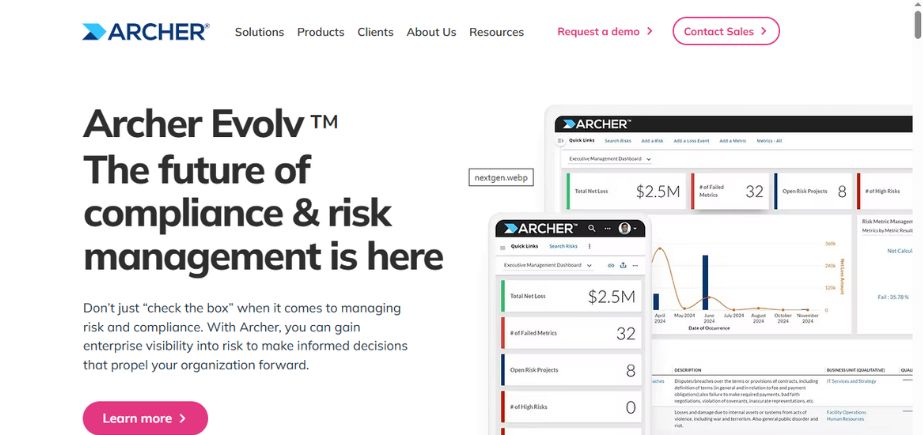
Archer is an extremely advanced integrated risk management system with robust SOC 2 compliance tracking capabilities. It enables organizations to create, manage, and monitor controls with regulatory workflows. Archer’s depth and flexibility are especially well-suited to large organizations with complicated risk environments. It includes centralized risk analysis, reporting, and audit trail support. Through its rich compliance scope, Archer helps organizations centralize department-wide risk management activities and be in perpetual compliance with standards.
Key Features:
- Risk and control libraries
- Customizable dashboards
- Compliance tracking
- Regulatory mapping
Pros:
- Enterprise-ready
- Deep customization options
Cons:
- Steep learning curve
- Expensive for SMBs
Pricing:
Custom enterprise pricing
Who Should Use It?
Heavily regulated industries and large enterprises.
14. Scrut Automation
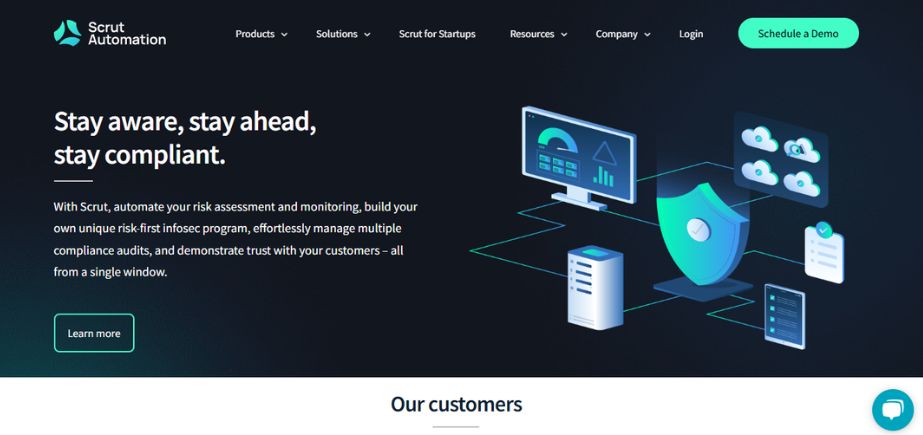
Scrut Automation is a cloud next-generation GRC platform ideal for fast-growing tech companies. Scrut streamlines SOC 2 compliance by evidence automation, control monitoring, and policy compliance. Scrut works with major cloud providers and business solutions to offer a real-time snapshot of your compliance status. With clean, easy-to-follow dashboard controls and workflows customizable to your requirements, Scrut facilitates teamwork with ease. Scrut is appropriate for startups and mid-market companies that require an affordable and scalable way of achieving and sustaining SOC 2.
Key Features:
- Real-time control monitoring
- Automated vendor risk assessments
- Evidence collection workflows
- Security posture dashboard
Pros:
- Startup-friendly
- Fast SOC 2 readiness
Cons:
- Limited advanced features
- Fewer legacy system integrations
Pricing:
Starts around $3,000/year
Who Should Use It?
Early-stage startups and agile teams aiming for fast compliance.
15. ComplyCube
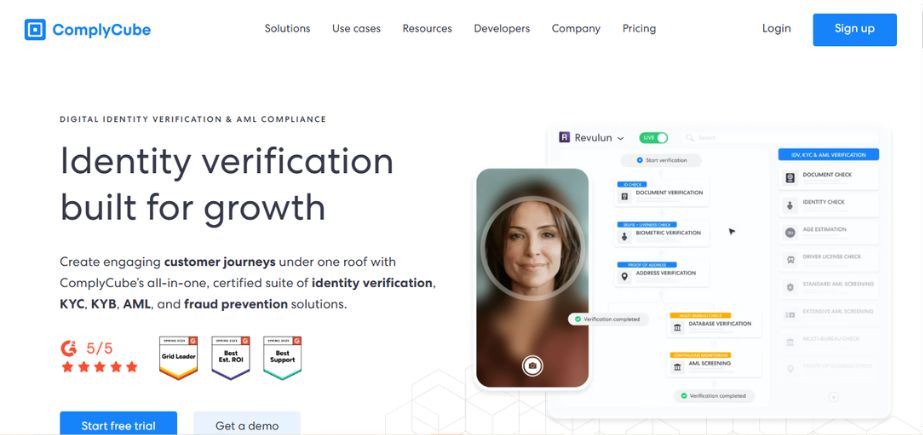
ComplyCube is one of the best SOC 2 compliance software enables companies to comply with SOC 2 and other standards through automation and workflows that are intuitive. Its solution encompasses identity verification, risk assessment, and ongoing compliance control monitoring. ComplyCube is integrated as an API, making it easy to fit into the current infrastructure, while its dashboard provides actionable information about compliance. It is best suited for fintech and SaaS organizations in need of scalable and secure compliance solutions. The platform is adaptive, and effective, and assists in minimizing the SOC 2 audit time and cost.
Key Features:
- KYC and identity verification
- SOC 2 control templates
- Evidence workflows
- API-first approach
Pros:
- Lightweight and developer-friendly
- Covers multiple compliance areas
Cons:
- Limited SOC 2 depth
- May require developer support
Pricing:
Free tier; paid from $249/month
Who Should Use It?
Tech-forward startups needing compliance + identity checks.
Comparison Between Different SOC 2 Compliance Software
Here’s a comparison table for the SOC 2 compliance software tools based on features, pricing, use cases, and websites for the following 15 tools:
| Software | Key Features | Pricing (Approx.) | Ideal For | Website |
| Sprinto | Continuous compliance, pre-mapped controls, audit workspace | Custom pricing | SaaS startups and cloud companies | sprinto.com |
| Vanta | Continuous monitoring, automated evidence, integrations, audit support | custom pricing | Startups to mid-size companies | vanta.com |
| Drata | Real-time monitoring, asset inventory, risk management, integrations | Contact for pricing | Fast-scaling tech companies | drata.com |
| Secureframe | Policy management, vendor risk, automated evidence collection | Contact for pricing | Growing tech and healthcare companies | secureframe.com |
| Tugboat Logic | Audit readiness, policy library, control mapping, onboarding support | Contact for pricing | Startups, especially pre-audit | tugboatlogic.com |
| Strike Graph | Customizable controls, risk management, continuous audit tracking | Custom pricing | SMBs seeking flexibility in compliance | strikegraph.com |
| Laika or Thoropass | Expert-led compliance, vendor management, evidence automation | Custom pricing | Teams seeking guided compliance | thoropass.com |
| TrustCloud | Risk assessments, automated workflows, TrustOps hub | 0-50 Employees$1,999/year(1 Framework) | Mid-size orgs wanting automation + guidance | trustcloud.ai |
| LogicGate | GRC workflows, customizable controls, risk quantification | Custom enterprise pricing | Enterprises needing modular GRC systems | logicgate.com |
| Aptible Comply | SOC 2 + HIPAA controls, audit automation, cloud compliance | From $499/month | Health tech and regulated cloud companies | aptible.com |
| Hyperproof | Multi-framework support, risk registry, evidence hub | Custom pricing | Larger orgs juggling multiple frameworks | hyperproof.io |
| AuditBoard | Audit workflow, internal controls, risk management suite | Enterprise pricing | Large enterprises and audit teams | auditboard.com |
| Archer | Full-scale IRM, compliance dashboard, control library | Enterprise pricing | Corporates with deep risk/compliance needs | archerirm.com |
| Scrut Automation | Real-time monitoring, evidence collection, vendor risk management | Custom pricing | Startups and mid-market companies | scrut.io |
| ComplyCube | Automated risk & compliance checks, real-time monitoring | Free tier; paid from $249/month | SMEs and growing businesses | complycube.com |
Conclusion
Your business size, technical skill, and security posture will determine the most suitable SOC 2 compliance solution. Small organizations or early-stage businesses can utilize Drata and Secureframe with automation and quick onboarding. Mid-sized businesses can utilize Vanta or Tugboat Logic due to their simple-to-use dashboards and manageable integrations.
Large enterprises with sophisticated IT infrastructures will be interested in utilizing Sprinto or A-LIGN due to their high scalability and customization. IT developers and IT professionals will appreciate AuditBoard and TrustCloud due to their API-based offerings. Lastly, not only do these solutions automate auditing but also guarantee ongoing security compliance, so your company can earn customer trust and stay competitive in a heavily regulated market.
FAQs
1. What is SOC 2 compliance software?
SOC 2 compliance software assists companies in applying and executing the security controls that the SOC 2 standard demands. These utilities automate evidence collection, scan systems to meet compliance and enable auditing process automation.
2. Who needs to use SOC 2 compliance software?
Any business that stores or processes customers’ information in the cloud, SaaS companies especially, should give SOC 2 compliance software a thought. This involves groups such as developers, IT administrators, security engineers, and compliance managers.
3. How does SOC 2 compliance software assist during audits?
It puts all the documents and proof in one place, offers auditor-friendly reports, and offers real-time visibility into your compliance status, making audits easier and quicker to perform.
4. Do small startups require SOC 2 compliant software?
Yes. Most of the tools have startup-based pricing and pre-formatted templates that allow small teams to become SOC 2 compliant without a full compliance team.
5. How long does it take to become SOC 2 compliant with these tools?
With proper SOC 2 compliance software and advanced preparation, firms are generally able to complete SOC 2 Type I in weeks and Type II in months, depending on internal processes and preparation.
6. What is the difference between SOC 2 Type I and Type II?
Type I assesses the design of controls at a point in time. Type II assesses the performance of those controls when operating over some time (typically 3 to 12 months).
